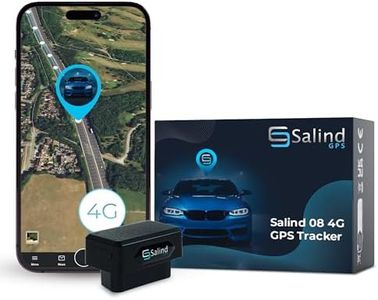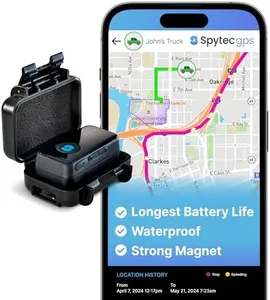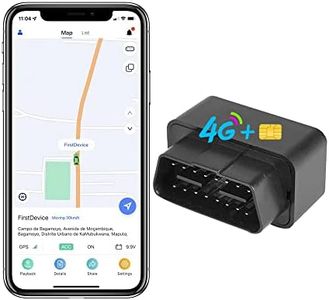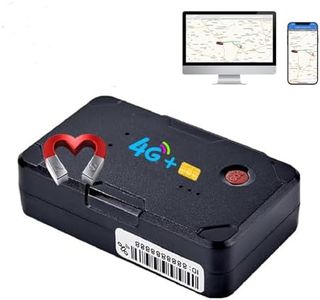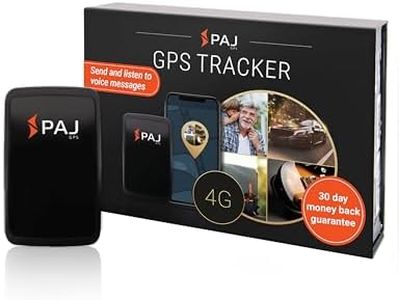We Use CookiesWe use cookies to enhance the security, performance,
functionality and for analytical and promotional activities. By continuing to browse this site you
are agreeing to our privacy policy
10 Best Teen Car Tracker
From leading brands and best sellers available on the web.Buying Guide for the Best Teen Car Tracker
Choosing a car tracker for a teen is all about finding the right balance between safety, privacy, and usability. The goal is to provide peace of mind for both parent and teen, without being overly intrusive or difficult to use. Start by thinking about what features are most important for your situation: do you need real-time location updates, driving behavior alerts, or simple trip history? Consider who will be reviewing the information—the parent, the teen, or both. Also, make sure the tracker is compatible with your vehicle and that you are comfortable with any ongoing service or app fees. Focus on simplicity, reliability, and transparency when making your decision.Tracking MethodThe tracking method describes how the device monitors and reports the car’s location. Most trackers use GPS, but some also use cellular networks to send information. A GPS-only tracker stores data locally, while GPS plus cellular lets you see live updates on your phone. If you want instant alerts or always-on tracking, go for GPS with cellular connectivity. If you just need trip history and are comfortable downloading data later, a basic GPS option might work. Choosing the tracking method depends on whether real-time updates are needed for your peace of mind or if reviewing routes later matches your needs.
Update FrequencyUpdate frequency tells you how often the tracker sends its location information. Some trackers update every minute, others every few seconds, and some only when the car starts or stops. Frequent updates are great if you want to know exactly where your teen is at all times, but they can also use more battery and data. Less frequent updates are less intrusive and save on power but provide less detail. Decide how closely you need to follow your teen’s trips: frequent updates are for real-time monitoring, while less often updates are fine for general tracking.
Installation TypeInstallation type refers to how the tracker is set up in the car. Some devices plug into the car’s OBD-II port (usually under the dashboard), others use a simple magnetic mount, and some require hardwiring. Plug-and-play models are easy and don’t need tools, while hardwired versions are hidden and tamper-proof but need professional installation. Think about who will install it and whether you want the tracker to be visible or hidden from your teen. If you want a simple setup that you can do yourself, choose plug and play; for stealth and security, consider a hardwired device.
Alert FeaturesAlert features are notifications sent to your phone or email about certain driving events, like speeding, harsh braking, entering or leaving specific areas (geofencing), or even unplugging the device. Stronger alert options allow parents to coach safer driving and stay aware of risky behavior. If you’re focused on safety coaching or want to know if your teen arrives safely, pick a tracker with a range of alerts. If you only want general location info, simpler trackers without alerts are sufficient.
App and User InterfaceThis refers to the software you use to view your tracker’s data. Some trackers come with user-friendly apps showing maps, trip history, and alerts, while others only let you log in via a website. Easy-to-use apps are especially important for busy parents or tech-savvy teens. Look for simple navigation, clear displays, and reliable notifications in their app or website. Consider who will use the app most: if you or your teen aren’t very techy, prioritize a straightforward interface.
Power SourceThe power source describes how your tracker stays powered. Options include plugging into the car’s electrical system (like the OBD-II port), using a built-in battery, or even connecting directly to the battery. Plug-in models work as long as the car runs, but unplugging disables them. Battery-powered trackers can be placed anywhere but need regular recharging or replacement. Choose a power type based on your convenience: constant plug-in for set-and-forget use or standalone battery for flexibility and discretion.
Data Retention and PrivacyData retention is about how long the tracker or its service keeps your trip data, and privacy covers who can see this information. Some services keep history for months, others only for days. Consider whether you need long-term history for reviewing driving patterns or short-term access for peace of mind. Also, think about data privacy—make sure only authorized users can view the info and that you’re comfortable with the provider’s policies. Pick longer retention if you’ll do regular reviews and pay attention to privacy settings for family trust.
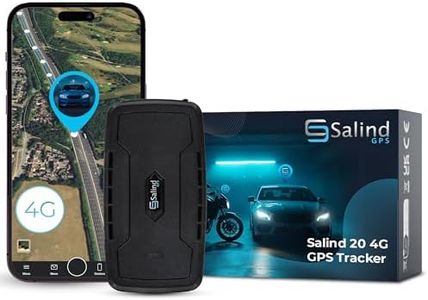
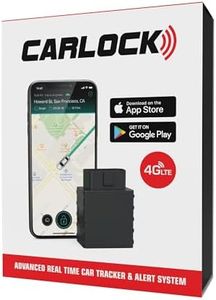
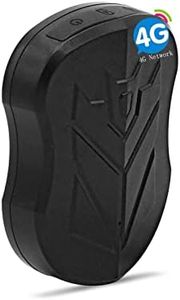
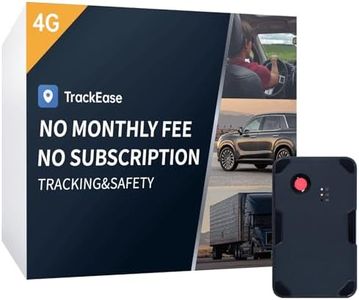
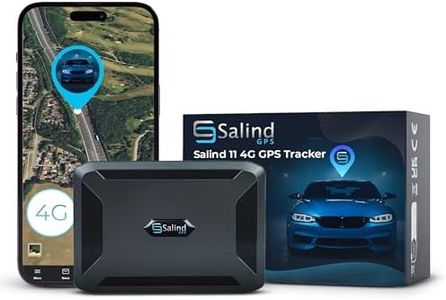


![Vyncs - GPS Tracker for Vehicles, [No Monthly Fee], 4G LTE, Vehicle Location, Trip History, Driving Alerts, GeoFence, Fuel Economy, OBD Fault Codes, USA-Developed, Family or Fleets](https://images-proxy.bestreviews.guide/7Ao4YYBaKcqknJgl7G7PMFrO89o=/0x300/https://m.media-amazon.com/images/I/41iQRJO+vdL._AC_CX679_.jpg)
